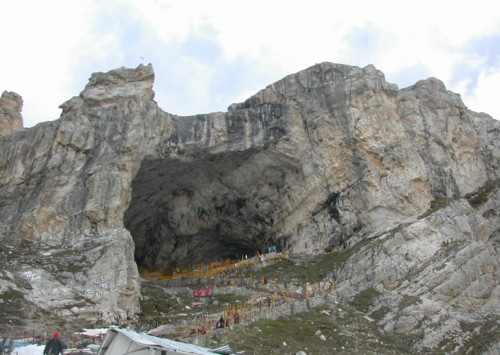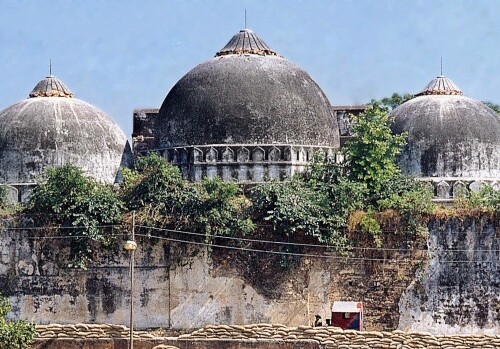Five elaborately constructed Hindu temples around the world
A place of worship for various Indians residing abroad, these elaborately constructed temples are also an iconic tourist attraction for many and an indication that despite religious differences, beautiful architecture with a spiritual soul will always unify people no matter what their beliefs.
Prambanan Temple Compounds, Indonesia
Built in the 10th century, the Prambanan Temple Compound is the largest temple complex in Indonesia. Broadly dedicated to Lord Shiva, it also has temples illustrating the epic of Ramayana and temples dedicated to the three great Hindu deities, Shiva, Vishnu, Brahma and the animals who serve them. The compound consists of several temples besides the Prambanan Temple. Out of the 508 stone temples that the compound has, 240 temples belong to the complex of Prambanan Temple alone. A characteristic of Shiva expression from the period, the construction of all these temples began during the heyday of the powerful Sailendra dynasty in Java during 8th century AD. Since then the structures have all seen various vagaries of nature and mankind but stand tall and beautiful thanks to the restoration works conducted in both traditional method of interlocking stone and modern methods using concrete to strengthen the temple structure. A UNESCO world heritage site, the compound has certain welfare norms protecting it from further damage.
Shri Swaminarayan Mandir, United Kingdom
Shri Swaminarayan Mandir, popularly known as the Neasden temple is perhaps the most elaborately constructed temple in London. Located in the Neasden suburb, the temple’s construction was completed in 1995, the same year it was opened to the public. Made of 5,000 tonnes of Carrera marble and fine Bulgarian limestone, the temple’s architecture is based on the design of millennia old traditional Hindu temples. Set in a huge complex of 1.5 acres it reaches the height of 70 feet and a width of 55 feet. This extravagant temple has 550 different designs, all expressing the ideas of Hinduism. Huge ceilings with 55 different designs, seven shikhars (spires), six ghummats (domes) , 193 sthambhas (columns) , 32 gavakshas (windows), four jharukhas (balconies) are just some of its features. Conferring to India’s ancient architectural texts, the Vastu Shastras, and yet also meeting the requirements of Britain’s stringent building code, the temple is one-of-its-kind in the western world. Most notably, every one of the 26,300 individually carved pieces that make up the temple were carved in India and shipped over to London!
Arul Mihu Navasakthi Vinayagar Temple, Seychelles
In Victoria, the dainty capital of Seychelles is a rather small temple, the Arul Mihu. Named after Lord Vinayagar, the Hindu god of safety and prosperity, the temple is a colourful offset to the neighbourhood’s tin roofs and low buildings. Housing the idols of Murugan, Nadarajah, Durga, Sreenivasa Perumal, Bhairawa and Chandekeswarar (Hindu Mythological figures), which are enshrined in the inner mandapam (a porch in temples in South India) it sees the Hindus of the island throng the temple to offer their prayers.
Sri Maha Mariamman, Thailand
With a pop of colourful figurines on display, the Sri Maha Mariamman Hindu temple is a manifestation of Tamil culture in Thailand. Built in the 1860s by Tamil immigrants, it features a 6m facade of intertwined sculptors of Hindu deities. Mostly bustling with people hailing from the Indian subcontinent, who also work inside the temple, it also sees plenty of Thai and Chinese devotees praying there in harmony with their Indian origin fellows. This is because the Hindu gods figure just as prominently in their individual religious beliefs as well. Officially called Wat Phra Si Maha Umathewi in Thai, it’s often referred to as Wat Khaek – kàak being a common expression for people of Indian descent. Literally, ‘guest’, the word is obviously detested by most Thai Indians.
Sri Mahamariamman Temple, Malaysia
Just next to China town, the ever bustling temple in the Malaysian capital of Kuala Lumpur is the country’s oldest temple, the Sri Mahamariamman Temple, founded in 1873. Dedicated to Mariamman, a South Indian mother goddess, the temple’s complex is authentic enough to resemble any other temple back-home in the southern part of India. Besides the shrine of the goddess, the temple houses figurines of Lord Ganesha, Lord Murugan, Goddess Durga among other Indian deities. Popular among tourists who visit this temple, the environment here reflects values representative of Indian culture. People from different ethnicities, cultures and countries who come here, all respect the norms and state yet another example of a religious cohabitation far away from home.
















